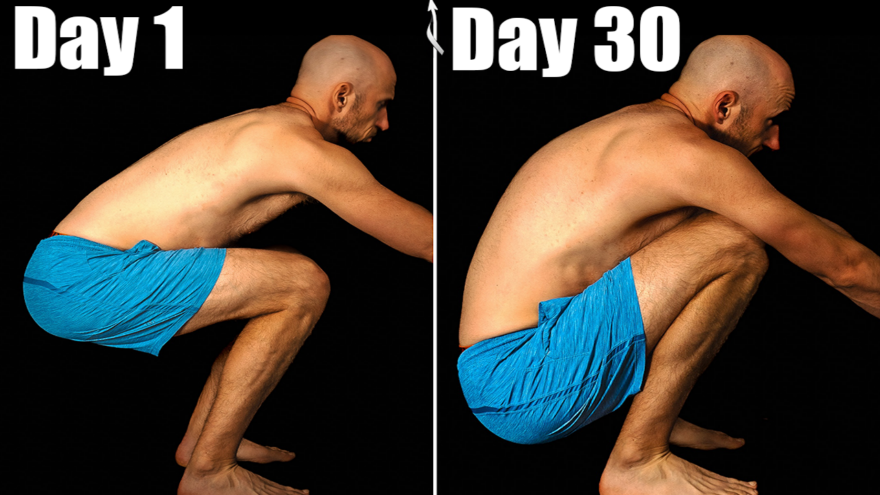Table of Contents
5 moves. 4 weeks. Want to move better?
Ever wake up feeling like the Tin Man from the Wizard of Oz? I’m talking knees aching, back-breaking, ankle not shaking.
You might be thinking, “I need a 10-step program for each of these!” But before you sign up for Mobility Needs Anonymous, let me simplify what you need.
Although people can have a variety of aches and pains, the starting line is almost always the same. Why? Because we often skip the foundational basics in our quest for mobility. It’s like wanting to run before you can walk. But today, we’re going back to basics. 🚼
In this post, I’m going to share five exercises that I kick off with for almost all my patients and clients.
Here’s the challenge: I want you to commit to these for the next two weeks. That’s right, just 14 days.
If you’re consistent, I bet you’ll see a difference in how you move and feel.
Let’s dive in.
The 5 Moves
I’d do 3 rounds of the following moves in order for 30 seconds each. Rest about 10-15 seconds before moving on to the next exercise.
1. Calcaneal Traction Roll
Many people have limited ankle mobility. If ankle dorsiflexion and eversion are meh, putting force into the ground will be tough! Let’s nail ground contact!
Here’s how to do it:
- Start in a half-kneeling position with the working leg in front.
- Take the outside hand (if your right foot’s in front, use your left hand) and place the web space behind the ankle bones. Grip the heel on either side.
- Traction down to help gap the heel joint.
- Lean back to create more space.
- Silent nasal inhale. Transfer your weight to the outside heel during this. Make sure the foot doesn’t lift.
- Open mouth exhale. Transfer your weight to the inside heel, ensuring the foot stays flat and doesn’t tip outward.
Remember, the subtalar joint only has about five degrees of eversion. It should NOT be a big movement. Don’t force it. I’m watching you!
2. Foam Roller Decompression with Overhead Reach
Limited rotation happens with increased front and backside muscle activity.
The fix here is to encourage front-to-back body expansion. We can use 2 factors for this:
- Sidelying position increases front-to-back ribcage dimensions
- Pressure from a foam roller can help squeeze the sides. Making the front-to-back-dimensions bigger
This move does exactly that:
- Lie on your side with a foam roller on the middle third of your ribcage.
- Weight bear through the foam roller and bottom leg
- Eyes to the horizon
- Silent nasal inhale
- Soft exhale through the mouth. Think about melting into the foam roller.
- Hold the top arm overhead and breathe
3. Decline Prone Breathing
Many have increased front-side muscle activity. I’m talking pecs, Im talking the 6-pack muscles.
When you see this, it often results in a slouched posture with forward head.
This exercise expands the anterior thorax (chest), and improves your mobility like whoa!
- Place 2 thick pads or 3 pillows under the lower ribs and stomach.
- Lie down on these pads. Arms are going to have elbow crease in-line with the eyes
- Weight bear through the inner elbows and lower ribs.
- Silent nasal inhale
- Soft mouth exhale. Think about getting heavier through those inner elbow points and the lower ribs.
4. Hooklying Breathing
Your hip mobility will be WHOA after this one. I use it to link the foot and pelvis together!
- Lie on your back with a ball or a yoga block between your knees.
- Ground contact points: PSIS (Bones that stick out above pelvis), inner heels, big toe base
- Silent nasal inhale
- Soft mouth exhale. Think about getting heavier through those foot and back points.
5. Wall Squat with Low Reach
This exercise is great for driving posterior expansion. The more this expands, the better you can rotate!
- Stand about your foot length away from the wall with a ball/yoga block between your knees.
- Ensure your weight is on the PSIS and the same points on the foot as the previous exercise.
- Eyes to the horizon.
- Squat down a little bit, keeping those points.
- Bend your elbows close to your body.
- Silent nasal inhale
- Soft mouth exhale
Sum Up
So, after those two weeks, how do you feel? Lighter? More fluid? Hopefully, not like a rusty robot anymore! Comment below and let us know!
